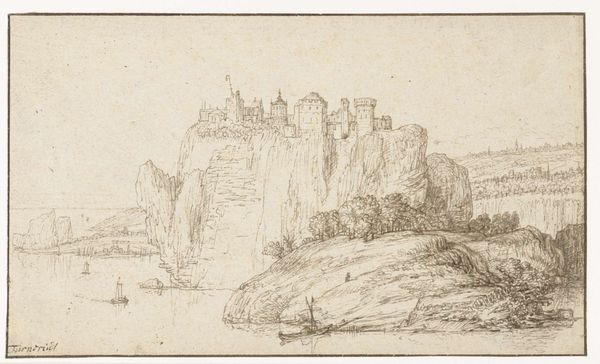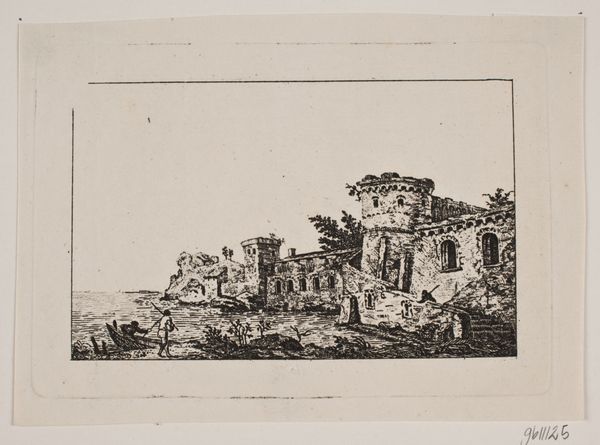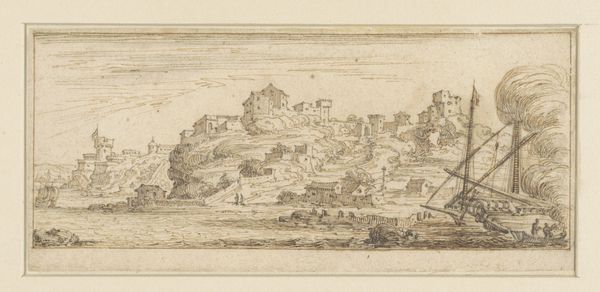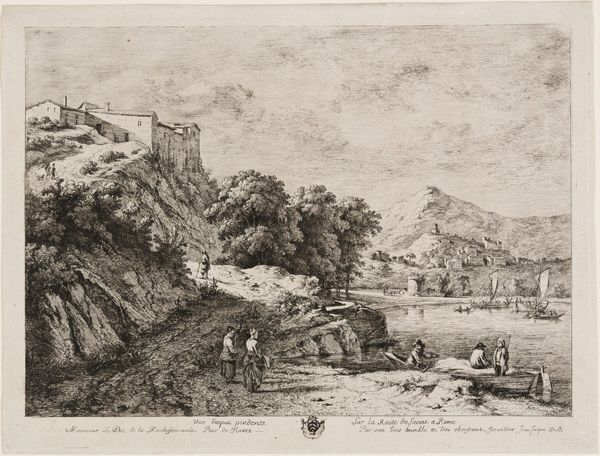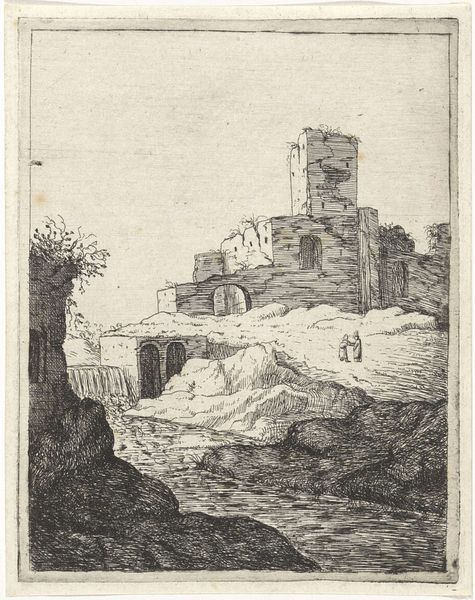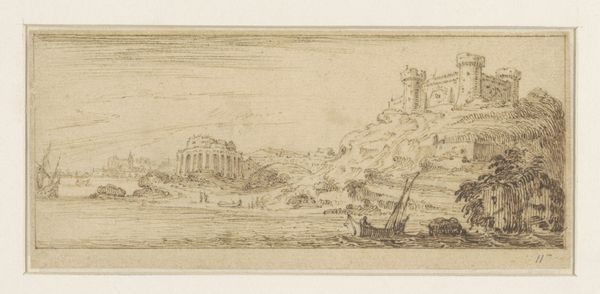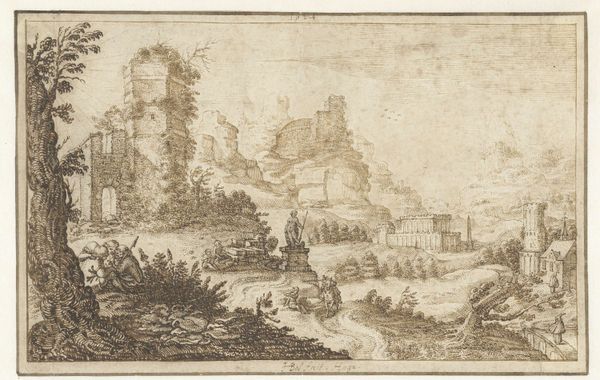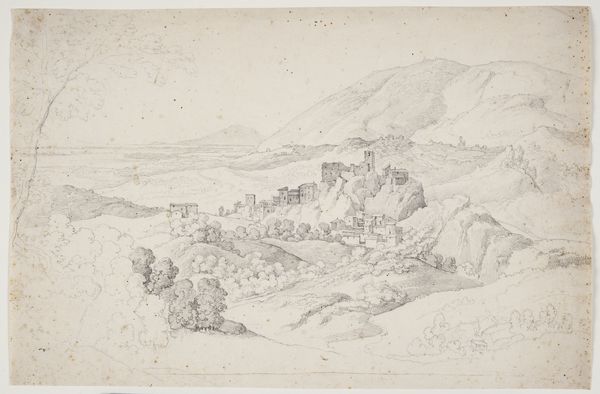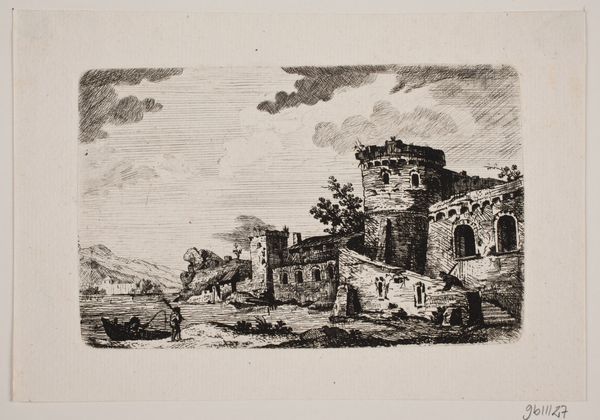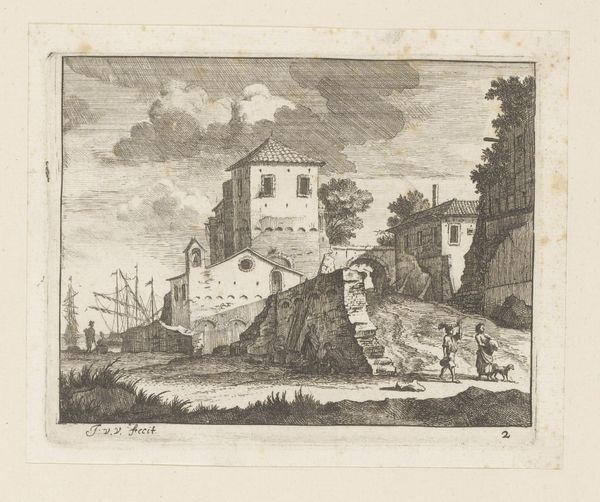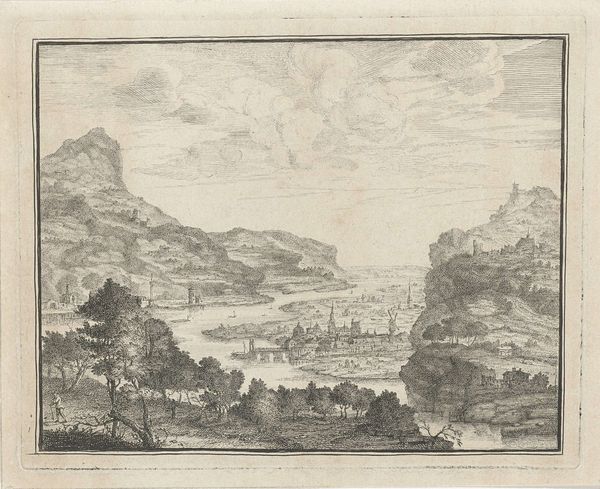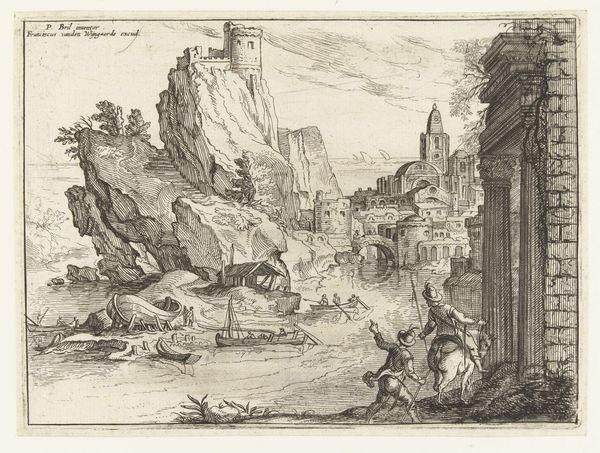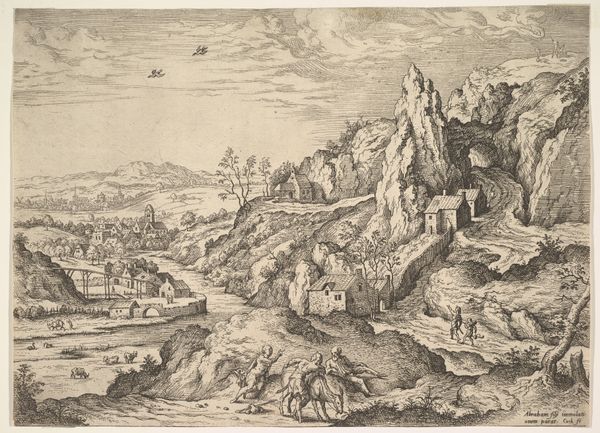
View of an Italian Coastal Village with Boats Landing on a Beach 1625 - 1673
0:00
0:00
drawing, print, etching, ink, engraving
#
drawing
#
baroque
# print
#
etching
#
landscape
#
ink
#
cityscape
#
engraving
Dimensions: 2 3/4 x 7 7/16 in. (7 x 18.9 cm)
Copyright: Public Domain
Curator: Before us we have "View of an Italian Coastal Village with Boats Landing on a Beach," a print made sometime between 1625 and 1673, courtesy of Casper van Eyck, currently residing here at the Metropolitan Museum. Editor: It strikes me immediately as an idyllic scene, a miniature stage upon which daily life unfolds against the dramatic backdrop of the coast. The use of etching gives it a sort of intimacy despite the bustling scene depicted. Curator: Indeed. The Italian coastline during the Baroque era was a powerful symbolic landscape for artists of the northern countries. Often depicted to inspire maritime activity and suggest grand tours that were shaping aristocracy during this era. Do you note anything specific? Editor: Well, visually, the dichotomy between the ordered architecture atop the hill versus the gathering people at the bottom catches my attention. A lot of coastal villages like this held layers of symbolism. The water being the source of life, rebirth, commerce, as well as unpredictable dangers. Even a quick glance provides the duality of safety in commerce, and risk in losing it all at sea. Curator: Precisely! These visual elements would have served a function in the way Baroque-era society understood itself. Van Eyck's scene shows us how landscape itself became a stage for projecting ideas of trade, leisure, and the natural order of society, if you will. What does it represent to us today? Editor: For me, the image continues to remind me of cyclical activity, daily movement between land and sea. Its permanence rests not in some architectural triumph, but rather the humble people who repeat history simply by existing here and engaging in a cultural dance of activity. I am reminded of both hope and impending disasters when the sea gets rough. Curator: So, what was likely conceived as a declaration of baroque stability reveals now, perhaps, the precarity inherent in coastal life and economies? It's striking how these visual motifs evolve over time to adopt such alternative yet consistent meanings. Editor: It also speaks to Van Eyck's artistic intention, perhaps his own awareness that imagery carries inherent cultural and psychological weight, and how each viewer can find individual meaning within the composition, centuries removed from its initial creation. Curator: And the art remains resonant across that divide, that it continues to carry weight in institutions and collections like the Met, that our present interpretations of historical visual landscapes still have roots in contemporary values. Editor: Beautifully put.
Comments
No comments
Be the first to comment and join the conversation on the ultimate creative platform.
